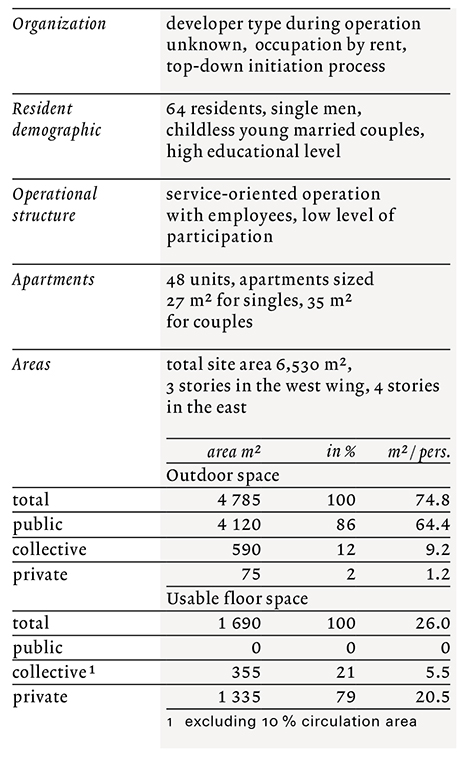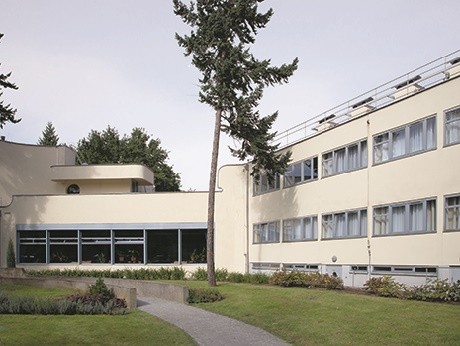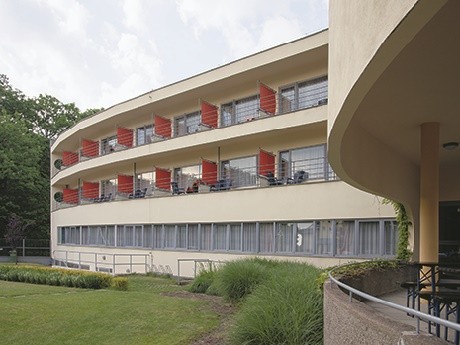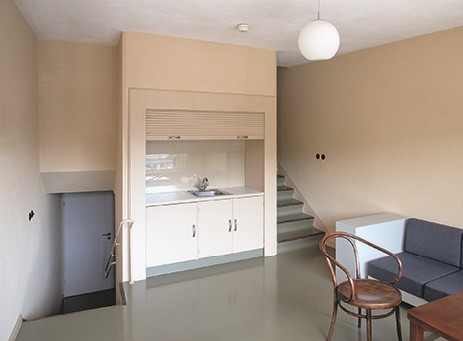Description
Little was known about the housing needs and lifestyles of the new user group in the housing market, known as urban nomads. Architects therefore relied heavily on scientific analysis to calculate physical minimum requirements for humans and, from this, the dimensions and facilities that would make a dwelling livable and functional. The result was monofunctional rooms, with space -saving interiors and built-in furniture, a concept presented at various exhibitions.[1] This was the case with the 1929 Werkbund Model Settlement in Breslau, where Hans Scharoun built as an exhibition building his version of a Men’s and Women’s Hostel, a high-standard hotel-like facility for bachelors and childless married couples. Scharoun’s Men’s and Women’s Hostel was intended to express the Weltgefühl of the new modern lifestyle, and is considered to be an evolution of the earlier Men’s and Women’s Hostels, which were accessible only to either men or women — but not both — and provided adequate housing for lower-class workers.[2] Using the term Men’s and Women’s Hostels for Scharoun’s building creates some confusion, as this type of hostel was otherwise reserved solely for the unmarried; the term Boarding House with Service would have been better suited to the modern living concept.[3]
In the Men’s and Women’s Hostel, the structural center of the building acted as a hinge between the two staggered residential wings, housing the central and most important common room: the entrance hall. The two user groups, bachelors and childless young married couples, were separated by this hub.[4] The entrance hall featured places to lounge, a restaurant for collective dining, and a shared roof terrace. The individual micro-apartments were designed as split-levels. Scharoun Men’s and Women’s Hostel had corridors that alternately accessed an upper and a lower level of each apartment and was considered the first of its kind in Central Europe. This arrangement meant that only every second floor had a hallway to the apartments, making the hall – ways more highly frequented. Microapartments were sized 27 m² for singles and 35 m² for couples. In addition to a living room, bedroom, and full bathroom, they also had a cabinet kitchen with roll shutters, an electric stove, and a small sink,[5] making it possible to live in these tiny apartments independently of the restaurant and other common areas. In keeping with the unattached lives of the residents of Men’s and Women’s Hostels and Boarding Houses, dwellings were rented fully furnished. Scharoun’s Men’s and Women’s Hostel was used as a permanent residential building only during the inter-war period. Later, it was converted for use as a hotel and is now open to the public.
 Selected project data
Selected project data
 Exterior view of the east wing
Exterior view of the east wing
 Exterior view of the west wing
Exterior view of the west wing
 Apartment interior with kitchenette
Apartment interior with kitchenette
Footnotes
Weigel (1996): Die Einraumwohnung als räumliches Manifest der Moderne, p. 7.
Eisen (2012): Vom Ledigenheim zum Boardinghouse, Bautypologie und Gesellschaftstheorie bis zum Ende der Weimarer Republik, p. 227.
Schwarzrock: “Entwicklungslinien der Weimarer Republik.” In Neue Gesellschaft für Bildende Kunst (1977): Wem gehört die Welt – Kunst und Gesellschaft in der Weimarer Republik, p. 97 f.
Ibid., p. 231.
Ibid., p. 242 f.
Originally published in: Susanne Schmid, Dietmar Eberle, Margrit Hugentobler (eds.), A History of Collective Living. Forms of Shared Housing, Birkhäuser, 2019. Translation by Word Up!, LLC, edited for Building Types Online.